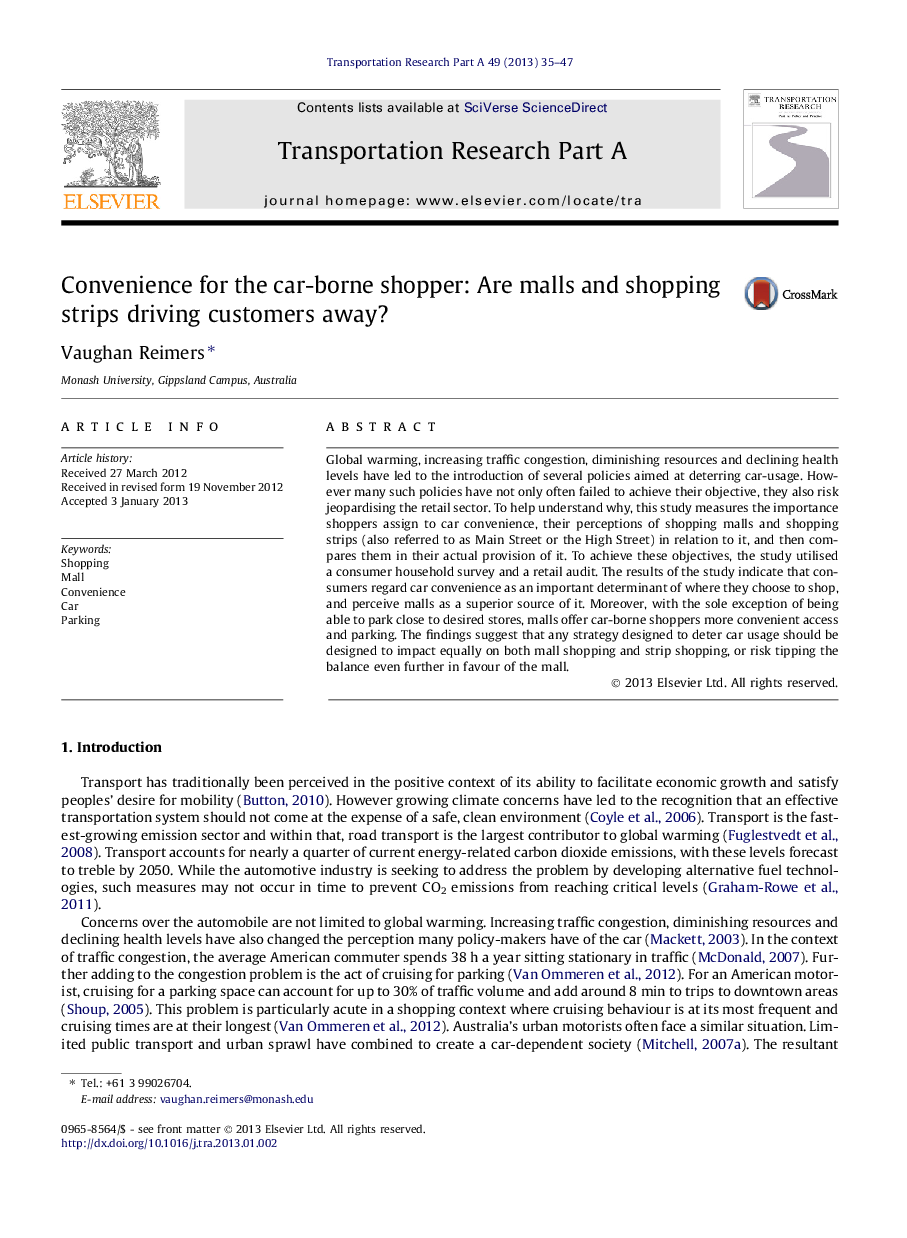| Article ID | Journal | Published Year | Pages | File Type |
|---|---|---|---|---|
| 311267 | Transportation Research Part A: Policy and Practice | 2013 | 13 Pages |
Global warming, increasing traffic congestion, diminishing resources and declining health levels have led to the introduction of several policies aimed at deterring car-usage. However many such policies have not only often failed to achieve their objective, they also risk jeopardising the retail sector. To help understand why, this study measures the importance shoppers assign to car convenience, their perceptions of shopping malls and shopping strips (also referred to as Main Street or the High Street) in relation to it, and then compares them in their actual provision of it. To achieve these objectives, the study utilised a consumer household survey and a retail audit. The results of the study indicate that consumers regard car convenience as an important determinant of where they choose to shop, and perceive malls as a superior source of it. Moreover, with the sole exception of being able to park close to desired stores, malls offer car-borne shoppers more convenient access and parking. The findings suggest that any strategy designed to deter car usage should be designed to impact equally on both mall shopping and strip shopping, or risk tipping the balance even further in favour of the mall.
► This study measures the importance shoppers assign to parking and the ease of accessing a retail centre by car. ► It also compares malls and shopping strips in their provision of these features. ► Analysis indicated that car access and parking influence retail centre preference and patronage behaviour. ► Moreover malls were found to be superior to strips in most aspects of access and parking convenience. ► Thus car-deterrent strategies must also include the mall or otherwise risk further comprising the market share of the strip.
